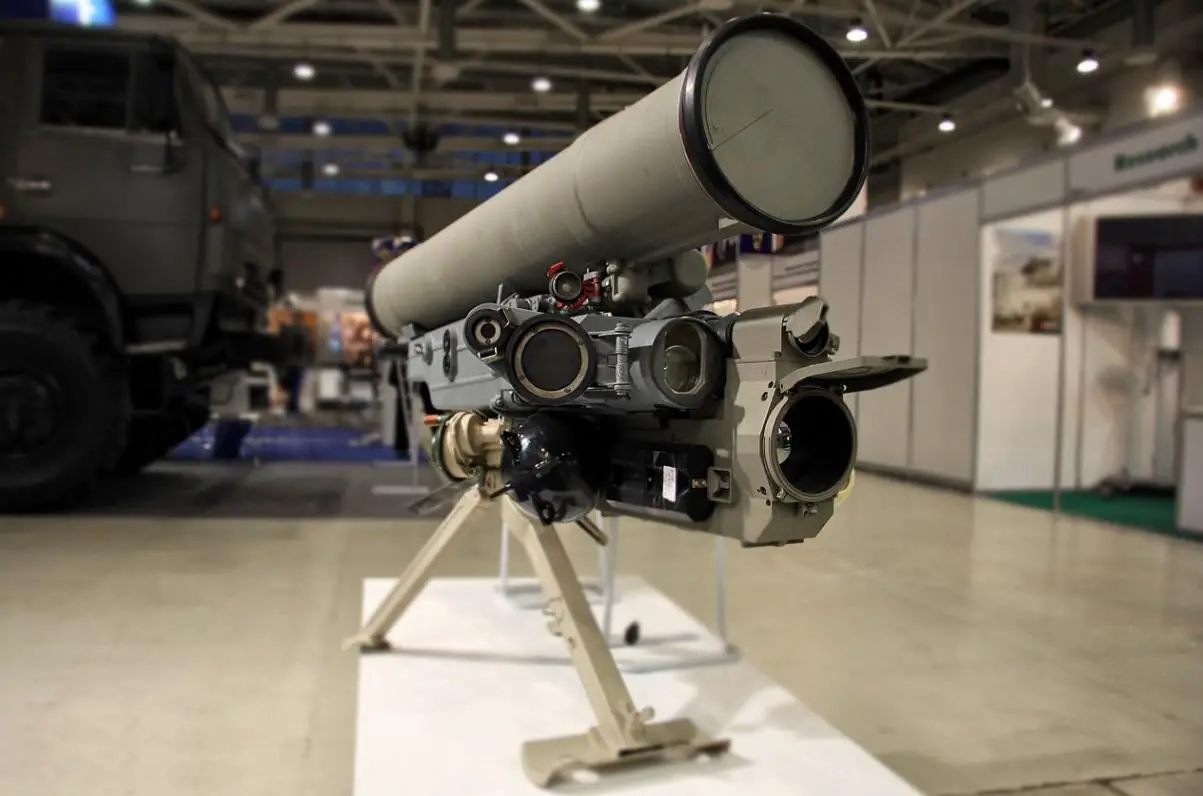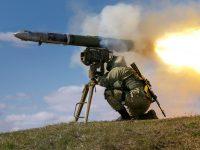The first batch of Kornet anti-tank guided missiles (ATGMs) for the Serbian armed forces arrived from Russia on December 24, the country’s president Aleksandar Vucic confirmed the same day. Serbia first revealed its intention to buy the missiles in November, during the meeting between Serbia’s Vucic and Russian president Vladimir Putin in Sochi. The Russian defense ministry separately announced it would be supplying additional Pantsir S1 systems, which are already in service with the Serbian armed forces. It is unclear how many of the man-portable anti-tank guided missiles (ATGM) arrived at the “Colonel Pilot Milenko Pavlovic” military airport in Batajnica aboard an Ilyushin IL-76 transport plane, or whether additional systems will be delivered.
Earlier, Serbian President Aleksandar Vucic said that deliveries of the missiles from Russia to Serbia would significantly strengthen the combat capability of its ground forces. Russia handed over to Serbia 30 T-72MS tanks and 30 BRDM-2MS armored personnel carriers. From 2018 to February 2020, Russia donated four Mi-35M helicopters, six MiG-29 fighters, 10 BRDM-2 amphibious armored scout cars, three Mi-17V-5 transport helicopters, and Pantsir-S1 air-defense missile-gun systems to Serbia as military-technical assistance. The Russian defense ministry separately announced it would be supplying additional Pantsir S1 systems, which are already in service with the Serbian armed forces.

The 9M133 Kornet (NATO reporting name AT-14 Spriggan, export designation Kornet-E) is a modern Russian man-portable anti-tank guided missile (ATGM) intended for use against main battle tanks. It was first introduced into service by the Russian army in 1998. The Kornet is among the most capable Russian ATGMs. It is not intended to fully replace previous systems, due to its high cost. The Kornet comes in variants with thermobaric warheads for use against soft targets. It was further developed into the 9M133 Kornet-EM, which has increased range, and an improved warhead. The Kornet has been widely exported and is produced under license in several countries. It was first used in combat in 2003 and has since been used in many conflicts.
The 9M133 missile together with its 9P163-1 tripod launcher and 1PN79-1 thermal sight forms the 9K135 missile system, which can be carried and operated by a two-person infantry crew. The transfer to the firing position takes less than one minute, and preparation and production of a shot in at least one second. Kornet’s anti-tank missile system has been fitted with the top attack capability. The Kornet anti-tank missile was unveiled in October 1994 by the KBP Instrument Design Bureau. The missile started development in 1988 as a modular, universal system able to engage any target from a mix of platforms using a reliable laser beam guidance system that was simple to use. It is a heavy ATGM, superior to the earlier 9K111(NATO: AT-4 Spigot) and 9K113 Konkurs (NATO: AT-5 Spandrel) wire-guided ATGMs, but not to replace them (due to the cost).
